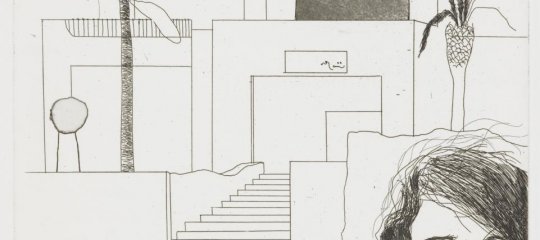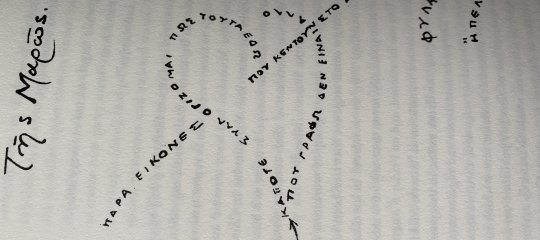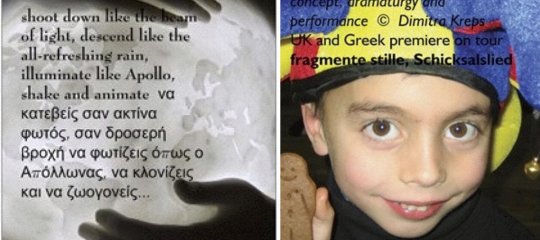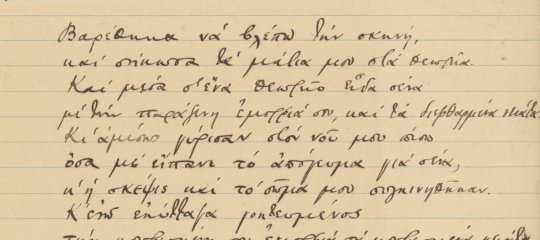Τα Νέα Ελληνικά στο Παλέρμο
SIKELIOTIS writes, "Η διδασκαλία των Νέων Ελληνικών στο Παλέρμο έχει μια μεγάλη παράδοση αλλά ένα αβέβαιο μέλλον εξαιτίας της υποχρηματοδότησης των ανθρωπιστικών σπουδών αλλά και της αδυναμίας ανανέωσης του μαθήματος"
Το κείμενο μπορείτε να διαβάσετε και από τα περιεχόμενα της ενότητας Διδάσκοντας την ελληνική
Τα Νέα Ελληνικά στο Παλέρμο διδάσκονται από τη δεκαετία του 1930, πολύ πριν διδαχθούν στην Ελλάδα!
Επικεφαλής της όλης προσπάθειας υπήρξε ο επί χρόνια διευθυντής της Casa d' Italia στην Αθήνα, Bruno Lavagnini. Έτσι στη Φιλοσοφική Σχολή, οι φοιτητές των κλασικών σπουδών διδάσκονται τα Νέα Ελληνικά και τη Νέα Ελληνική Λογοτεχνία σε πολύ ικανοποιητικό επίπεδο. Ο Λαβανίνι μάλιστα ίδρυσε και το Ινστιτούτο Βυζαντινών και Νεοελληνικών Σπουδών στο Παλέρμο, που είναι το σημαντικότερο στην Ιταλία με μια πολύ πλούσια βιβλιοθήκη. Διάδοχος του Λαβανίνι είναι ο καθηγητής Ρότολο, αλλά και η κόρη του, κα Λαβανίνι, επίτιμη πρόξενος της Ελλάδας στο Παλέρμο, καθηγήτρια βυζαντινολόγος στη Φιλοσοφική Σχολή.
Νέα Ελληνικά διδάσκονται ακόμη και σε ένα άλλο τμήμα, το τμήμα Ξένων Γλωσσών και Διεθνών Σχέσεων, οι απόφοιτοι του οποίου μπορούν να απασχοληθούν ως μεταφραστές ή ως διεθνολόγοι. Υπεύθυνη καθηγήτρια για το μάθημα των Ελληνικών στο τμήμα αυτό είναι η Ινές Ντι Σάλβο και διδάσκουσα επίσης η Ελληνίδα Αντωνία Σοφικίτου, πρόεδρος της μικρής ελληνικής κοινότητας του Παλέρμο.
Ωστόσο, τα προβλήματα είναι πολλά. Πρώτα πρώτα όλοι οι παραπάνω διδάσκοντες, με εξαίρεση την κα Ντι Σάλβο, είναι μεγάλοι σε ηλικία, πρακτικά κοντά στη σύνταξη. Κατά δεύτερο λόγο οι βυζαντινές σπουδές και λόγω της πολιτικής της κυβέρνησης φυτοζωούν, μάλιστα τώρα πια δεν υπάρχουν καθόλου φοιτητές παρά μόνο ένας υποψήφιος διδάκτωρ!
Συνολικά οι φοιτητές και από τα δύο τμήματα που μαθαίνουν ελληνικά δεν ξεπερνούν τους τριάντα. Καλύτερα είναι τα πράγματα στο τμήμα κλασικών σπουδών όπου το επίπεδο των φοιτητών είναι υψηλό ενώ στις Ξένες Γλώσσες είναι από μέτριο έως πολύ μέτριο...
Ακόμη, δεν υπάρχουν γραφεία για τους καθηγητές, μόνο δύο διδάσκοντες έχουν υπολογιστή δικό τους, και το αξιόλογο νεοελληνικό σπουδαστήριο χρησιμοποιείται ακόμη και για γραφείο 8-9 διδασκόντων αλλά και για συνεδριάσεις ακόμη και για μαθήματα. Ούτε αίθουσες επαρκείς υπάρχουν και γα μαθήματα των Νέων Ελληνικών γίνονται σε ένα μικρό χώρισμα της βιβλιοθήκης !
Το πρόβλημα της χρηματοδότησης είναι φανερό και στα παραπάνω αλλά και στο γεγονός ότι δεν προκηρύσσονται θέσεις για νέους διδάσκοντες παρότι υπάρχουν αρκετά ικανά στελέχη, Ιταλοί, που και καλά ελληνικά γνωρίζουν και επίπεδο έχουν και όρεξη για δουλειά διαθέτουν. Φυτοζωούν ωστόσο με υποτροφίες!
Έτσι δεν υπάρχει ανανέωση, (στα στελέχη, στο σύστημα διδασκαλίας, στην υποδομή) με αποτέλεσμα να μην είναι τα ελληνικά μια γλώσσα ελκυστική για τους φοιτητές.
Εγώ βέβαια δεν έχω περιθώρια παρέμβασης, παρά μόνο κάνοντας όσο πιο ελκυστικό μπορώ το δικό μου μάθημα.
Εγώ διδάσκω σε τρία τμήματα: μία ώρα στο πρώτο έτος, μία ώρα στο δεύτερο εβδομαδιαία και δύο ώρες καθημερινά σε ένα τμήμα εντατικό αρχαρίων. Αυτά μόνο στο τμήμα Ξένων Γλωσσών καθώς το κλασικό τμήμα θα ξεκινήσει το επόμενο εξάμηνο.
Από Παλέρμο όβερ
Τάσος Χατζηαναστασίου
- Εισέλθετε στο σύστημα για να υποβάλετε σχόλια











